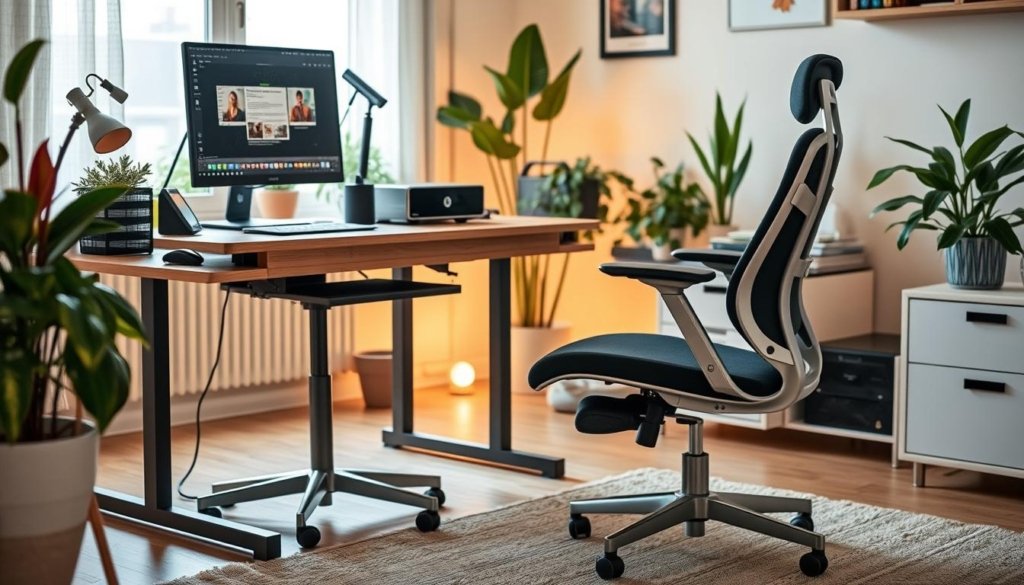Lower back pain is a big problem in Australia, affecting millions every year. But how does physiotherapy help with this issue? This guide will show you how physiotherapy tackles lower back pain. It covers assessment, treatment, and ways to get back to full strength and mobility.
Is there a way to fix the real causes of your lower back pain? This guide will look at different types of pain, risk factors, and how physiotherapy can help. We’ll explore the techniques that can make a big difference in your recovery.
Key Takeaways
- Physiotherapy is a proven, safe, and effective approach to managing lower back pain
- Understanding the different causes and types of lower back pain is crucial for effective treatment
- Comprehensive assessment and diagnosis are the foundations of a tailored physiotherapy plan
- Manual therapy techniques, exercise-based interventions, and pain management strategies can all play a role in rehabilitation
- Developing a personalised core strengthening and movement therapy program is key to long-term recovery
Understanding Lower Back Pain: Causes and Types
Lower back pain is a common issue with many causes. It can come from muscle strains, overuse, or sudden movements. Conditions like lumbar disc bulges, disc herniations, sciatica, and facet joint sprains also cause pain in the lower back.
Common Causes of Lower Back Pain
Lower back pain can be hard to pinpoint. But, some common causes include:
- Muscle strains and sprains from overuse or sudden movements
- Lumbar disc bulges or disc herniations that put pressure on the spinal nerves
- Sciatica, where the sciatic nerve running down the leg becomes irritated or compressed
- Facet joint sprains in the small joints connecting the vertebrae
- Osteoarthritis, which can cause joint and spine degeneration
- Ankylosing spondylitis, an inflammatory condition affecting the spine
Identifying Risk Factors
Some factors can make you more likely to get lower back pain, including:
- Excess weight or obesity
- Poor posture and body mechanics
- Repetitive movements or heavy physical work
- Lack of regular exercise and core muscle weakness
- Smoking and nicotine use
- Psychological stress and mental health conditions
Different Types of Back Pain Conditions
Back pain can be either acute (short-term) or chronic (long-lasting). Acute pain usually has a clear cause, like an injury, and gets better in a few weeks. Chronic pain lasts longer, sometimes for years, and finding the cause can be hard.
Finding the cause of lower back pain is key to the right treatment. Even if the exact cause is hard to find, knowing what might be causing it can help find relief.
Initial Assessment and Diagnosis Approach
Managing lower back pain starts with a key step: the initial physiotherapy assessment. Physiotherapists use a method called diagnostic triage to sort patients. They look for serious problems, nerve issues, or mechanical pain. This step includes a detailed patient history, physical exam, and sometimes a neurological check.
The goal is not to pinpoint the exact pain source. Instead, they focus on the impairments and factors that cause pain. This way, physiotherapists can create a treatment plan that tackles the real issues, not just the symptoms.
- Diagnostic Triage: Physiotherapists examine the patient’s history and symptoms to find the pain’s cause. They look for serious conditions that need quick medical help.
- Physical Examination: A detailed physical check-up is done. It looks at posture, movement, muscle strength, and touch. This helps guide the treatment plan.
- Neurological Assessment: Sometimes, a neurological check is needed to find nerve problems. This might include tests of senses and reflexes.
Physiotherapists use this detailed assessment to understand the patient’s situation. They then create a management plan to fix the lower back pain’s root cause. This approach ensures the patient gets the right treatment, leading to better results and quicker recovery.
“The initial physiotherapy assessment aims to classify patients according to diagnostic triage, identifying serious pathologies, nerve root issues, or mechanical back pain.”
Physiotherapy Management in Lower back pain
Physiotherapy is key in managing lower back pain. It uses a mix of methods to tackle the root causes and offer relief. This includes manual therapy, exercises, and pain management strategies.
Manual Therapy Techniques
Physiotherapists use manual therapy to ease lower back pain. They might do spinal mobilisation, soft tissue massage, or joint manipulations. These methods help improve joint movement, reduce muscle tightness, and boost spinal function.
Exercise-Based Interventions
Exercise programs are a big part of physiotherapy for lower back pain. These programs include core strengthening exercises and the McKenzie method. They help fix impairments, improve stability, and encourage self-management.
Pain Management Strategies
Physiotherapists also use various pain management strategies. These can include lumbar traction, acupuncture, electrical stimulation, and heat or cold therapy. The aim is to give quick relief and aid in healing.
By using these proven physiotherapy methods, people with lower back pain can see big improvements. They can feel less pain, move better, and enjoy a better quality of life.
| Physiotherapy Technique | Description |
|---|---|
| Spinal Decompression Therapy | A non-surgical method that gently stretches the spine. It helps relieve pressure on discs and nerves. |
| McKenzie Method | A system that focuses on patient education and active exercises. It’s designed to manage lower back pain. |
| Lumbar Traction | A technique that applies gentle force to the lower back. It helps relieve pain, improves mobility, and aids in healing. |
“Physiotherapy is considered one of the most effective methods for treating lower back pain.”
Core Strengthening and Rehabilitation Exercises
Managing lower back pain starts with core exercises. These exercises boost muscle strength and stability in the lower back. They help prevent pain and improve function.
The transversus abdominus activation targets deep core muscles. It strengthens the transversus abdominus, key for spinal stability.
Glute bridges are vital for rehabilitation. They strengthen glutes, improving hip and pelvic stability. This reduces lower back strain.
Lumbar stabilisation exercises are crucial for the lower back. They strengthen muscles like the multifidus and erector spinae. This enhances spinal stability.
Physiotherapists suggest doing these exercises often. Each exercise should be done 10 times, up to 3 sets a day. It’s important to use the right technique and progress slowly for safe and effective results.
Adding these exercises to a treatment plan can greatly help. It addresses muscle imbalances and improves stability. This leads to relief and a more active life without pain.

| Exercise | Repetitions | Sets | Frequency |
|---|---|---|---|
| Transversus Abdominus Activation | 10 | 3 | Up to 3 times per day |
| Glute Bridges | 10 | 3 | Up to 3 times per day |
| Lumbar Stabilisation Exercises | 10 | 3 | Up to 3 times per day |
Consistency and correct technique are essential for rehabilitation. A physiotherapist can tailor an exercise program to meet your needs. This ensures you reach your recovery goals.
Treatment Options and Physical Interventions
People with ongoing lower back pain have many effective treatments. These include spinal mobilisation, soft tissue therapy, and Clinical Pilates. These methods help reduce pain, improve movement, and boost function.
Spinal Mobilisation Techniques
Joint mobilisation is a key part of physiotherapy for lower back pain. It involves gentle, hands-on movements on the spinal joints. This helps restore normal movement and lowers pain. Physiotherapists use different techniques based on each patient’s needs.
Soft Tissue Therapy
Physiotherapists also use trigger point release and dry needling for muscle tightness and pain. These methods target and release tension in soft tissues. This can help reduce lower back pain.
Clinical Pilates and Movement Therapy
Clinical Pilates is a big part of treating lower back pain. It’s an exercise program that improves core strength and muscle control. It helps restore normal movement and prevents future pain.
Combining these physiotherapy methods can greatly help manage and solve lower back pain.
| Physiotherapy Intervention | Description | Key Benefits |
|---|---|---|
| Joint Mobilisation | Gentle, hands-on movements applied to spinal joints to restore normal range of motion and reduce pain. | Improves joint mobility, decreases pain, and enhances overall spinal function. |
| Trigger Point Release and Dry Needling | Techniques that focus on identifying and releasing areas of muscular tension or ‘knots’ to alleviate myofascial pain. | Reduces muscle tightness and discomfort, improves flexibility and movement. |
| Clinical Pilates and Movement Therapy | Evidence-based exercise programs that target core stability, muscle control, and normal movement patterns. | Enhances core strength, improves overall function, and helps prevent future episodes of lower back pain. |
Self-Management Strategies and Lifestyle Modifications
Managing lower back pain needs a proactive and all-around approach. Self-management strategies and lifestyle changes are key parts of physiotherapy. They help people take charge of their recovery and long-term health.
Maintaining Good Posture is a key self-management technique. Keeping the body aligned, whether sitting, standing, or doing daily tasks, helps ease lower back pain. Physiotherapists offer ergonomic advice to improve work and home setups for better posture.
Stress Management is also crucial. Chronic stress can make lower back pain worse by tightening muscles and causing inflammation. Physiotherapists teach patients stress management techniques like relaxation exercises and mindfulness to help manage stress.
Regular Physical Activity is vital for self-management. Low-impact exercises like walking, swimming, or gentle stretching can strengthen core muscles and improve flexibility. This reduces the chance of future back pain. Physiotherapists help with posture correction and suggest exercises that fit each person’s needs and abilities.
By using these self-management strategies and lifestyle changes, people with lower back pain can help their recovery. They can also lower the chance of pain coming back and keep their spine healthy for the long term.

| Self-Management Strategy | Benefit |
|---|---|
| Maintaining Good Posture | Reduces stress on the lower back and prevents further strain |
| Stress Management | Helps manage muscle tension and inflammation associated with chronic stress |
| Regular Physical Activity | Strengthens core muscles, improves flexibility, and reduces the risk of future back pain episodes |
“Empowering patients with self-management strategies is a crucial aspect of physiotherapy management for lower back pain. By taking an active role in their recovery, individuals can achieve long-lasting improvements in their spinal health and well-being.”
Recovery Timeline and Progress Monitoring
The time it takes to recover from lower back pain varies. But, with the right care, most people see quick improvements. Early goals are to reduce pain and slowly get back to normal activities. Later, plans might include ongoing exercise and lifestyle changes to keep the pain away.
Short-term Recovery Goals
- Lower pain and discomfort with therapy, exercise, and pain relief methods.
- Boost mobility and flexibility in the spine.
- Start doing daily tasks again, but safely.
- Improve physical function and life quality.
Long-term Management Plans
For lasting functional improvement and to stop pain from coming back, plans might include:
- Keep up with an exercise program that strengthens the core and improves posture.
- Make lifestyle changes like better ergonomics, managing weight, and stress.
- Have regular check-ups with a physiotherapist to track progress and adjust treatment.
Prevention Strategies
It’s key to stay proactive to keep the spine healthy and avoid future back pain. Strategies include:
| Technique | Benefits |
|---|---|
| Proper Lifting Mechanics | Less strain on the lower back during everyday tasks. |
| Regular Exercise Routine | Makes the core and muscles stronger, helping with functional improvement. |
| Ergonomic Workplace Setup | Reduces the chance of pain monitoring and recurrence prevention. |
By watching progress, setting realistic goals, and using prevention strategies, people with lower back pain can get better and stay that way. They can enjoy functional improvement and keep pain monitoring and recurrence prevention in check.
Conclusion
Managing lower back pain well needs a patient-centred approach. This means doing a detailed check-up, making a treatment plan just for you, and teaching you how to manage your pain. Most back pain gets better with evidence-based physiotherapy. But, if the pain doesn’t go away, you might need to see more doctors and try different treatments.
Physiotherapy is a safe, custom-made way to handle lower back pain. It helps you feel better and stop pain from coming back. Physiotherapists use special techniques, exercises, and tools to help you get back to normal.
Physiotherapy is key in treating lower back pain because it looks at the whole picture. It helps you take charge of your back health. By keeping an eye on how you’re doing and changing your treatment as needed, you can manage your pain and live better.







